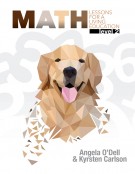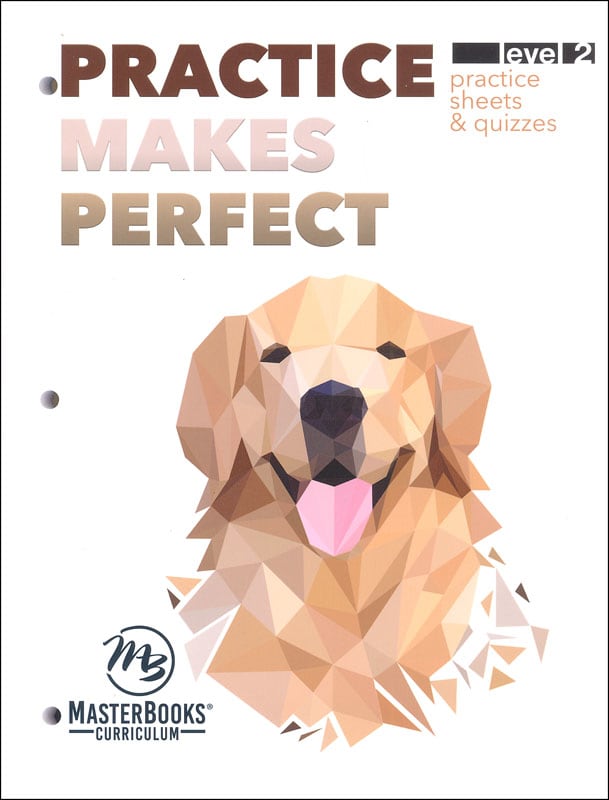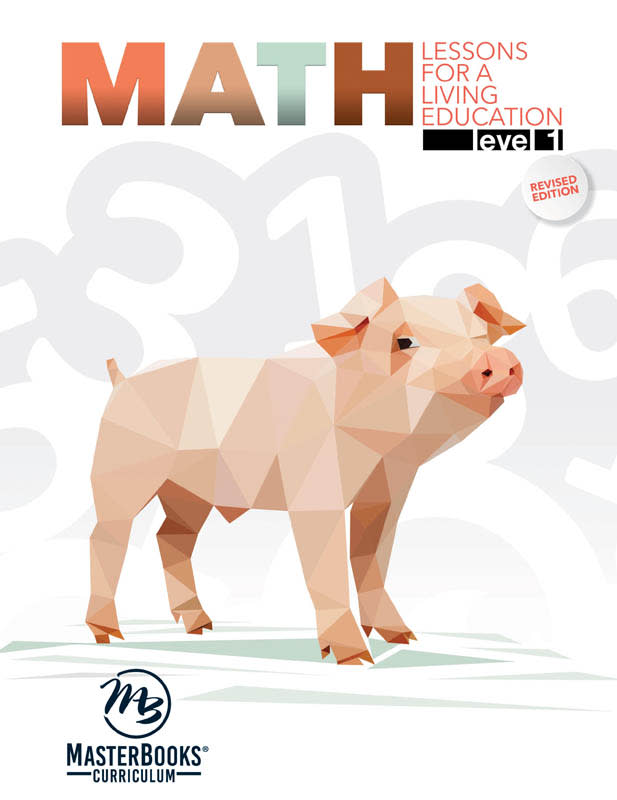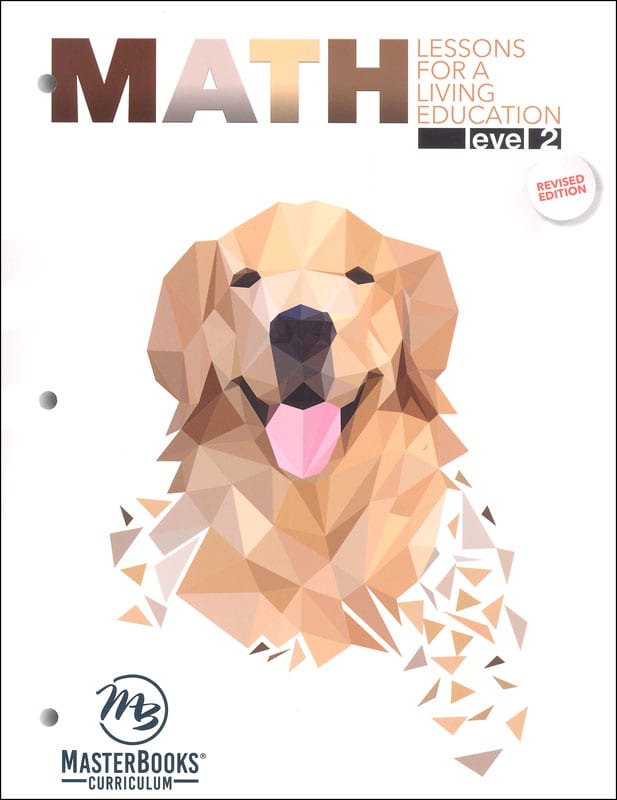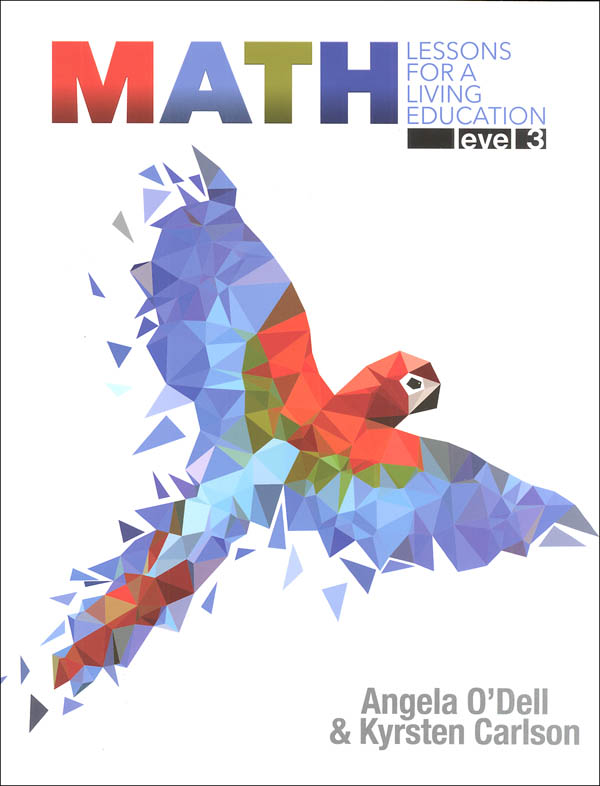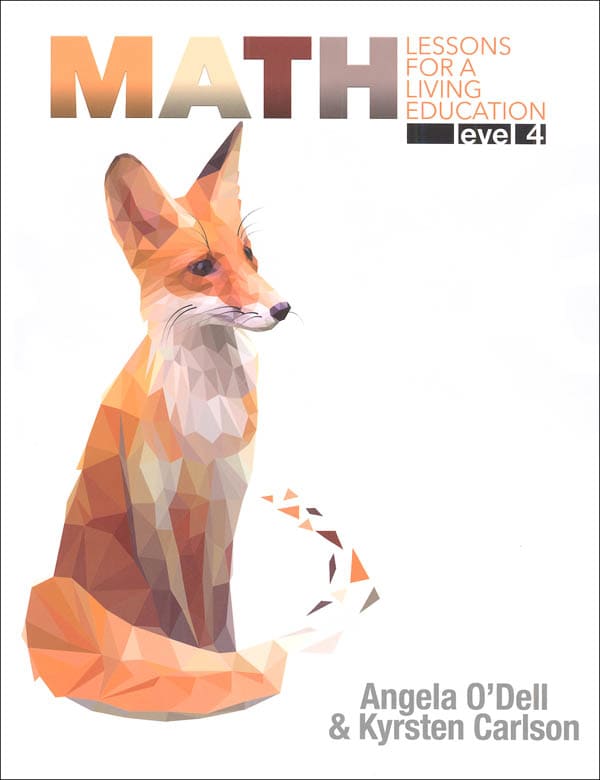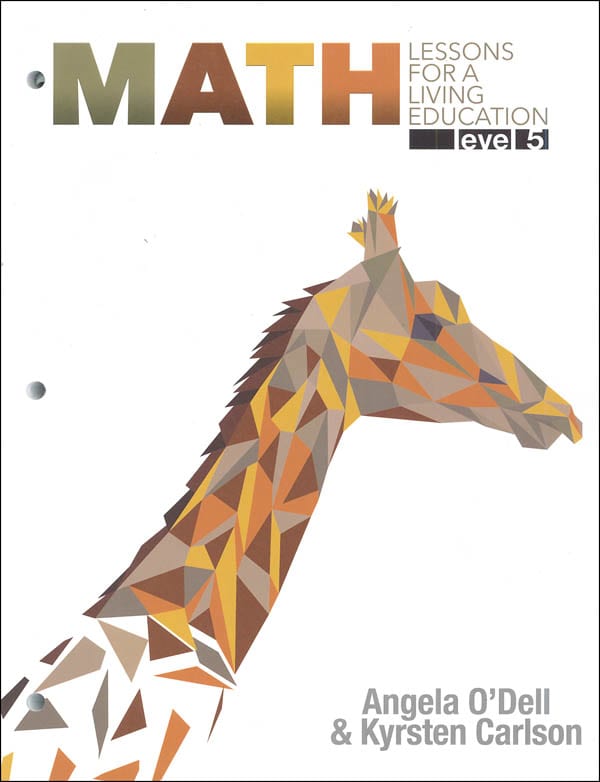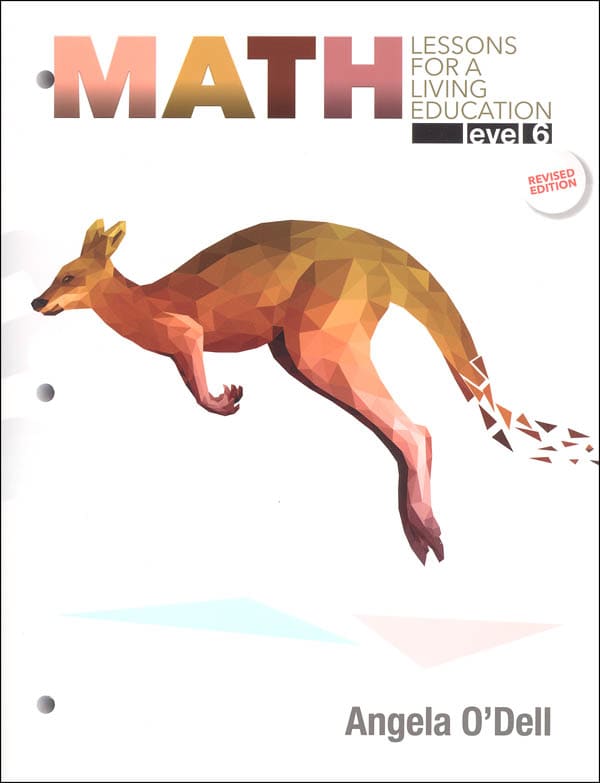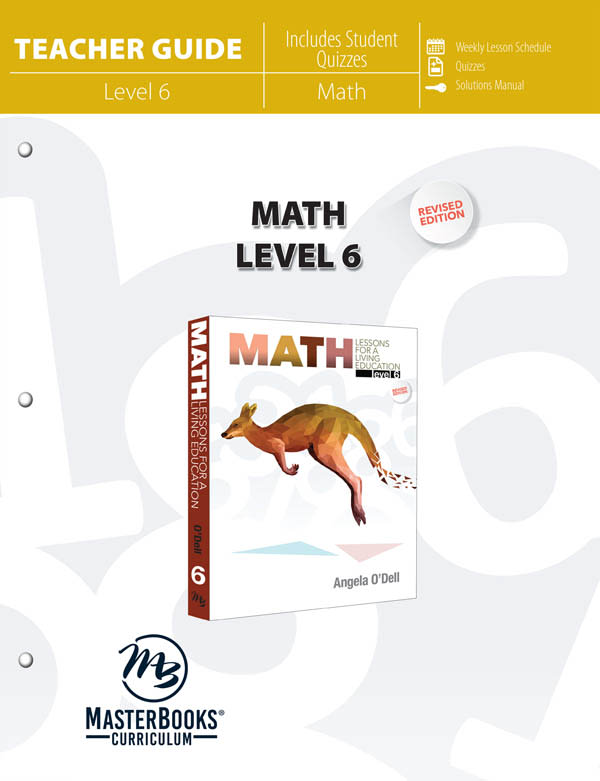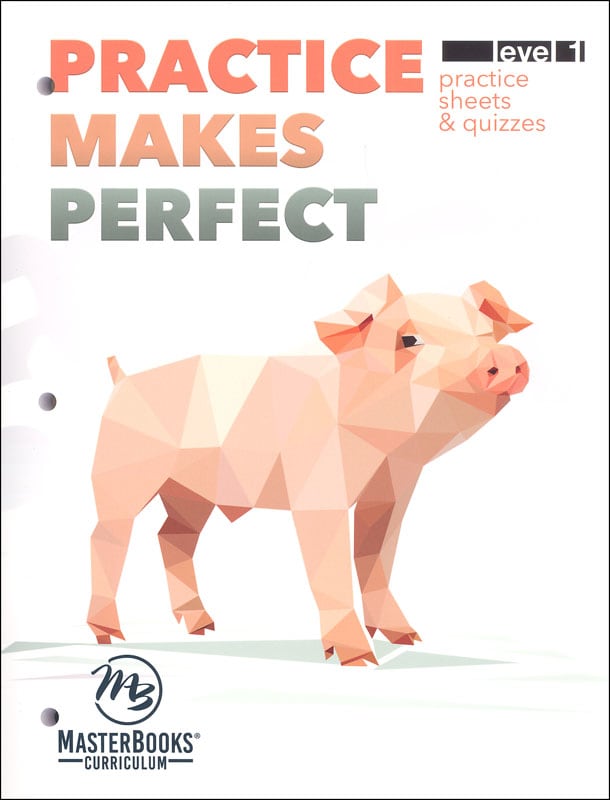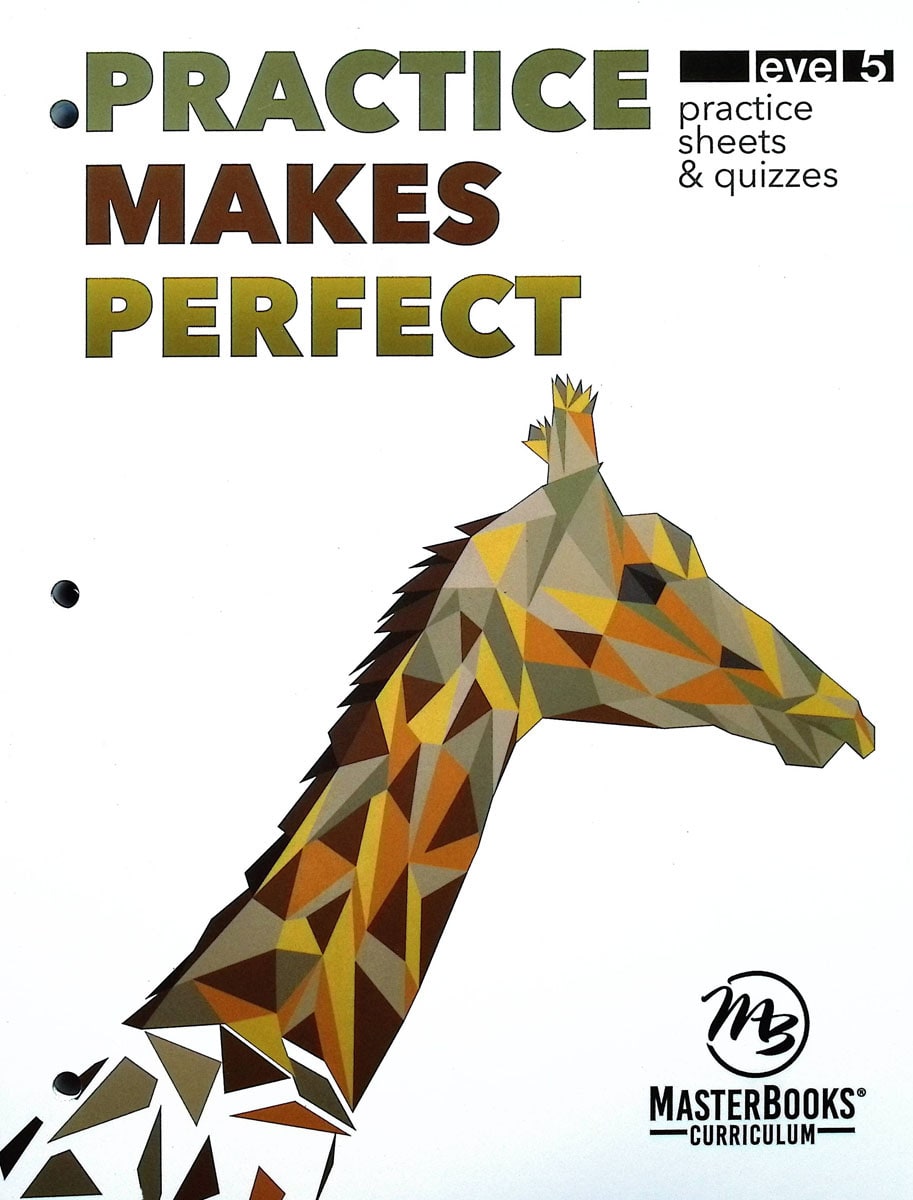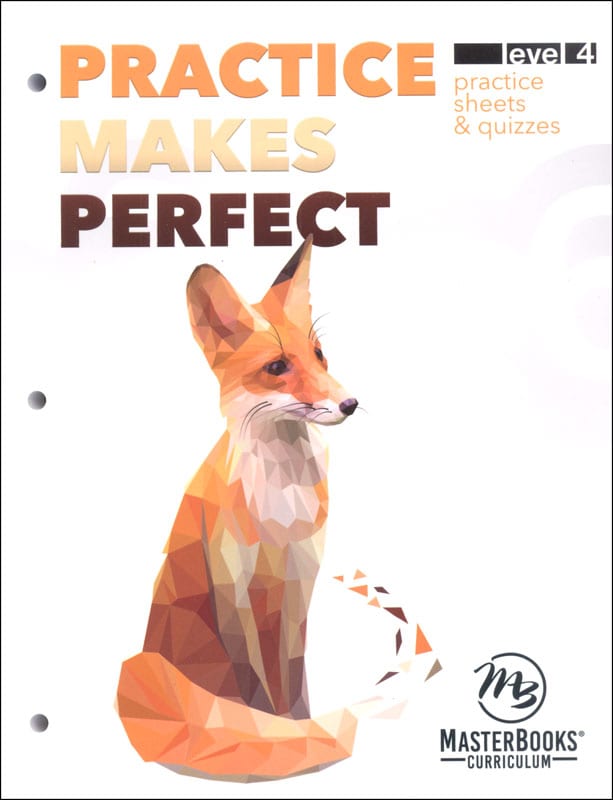Math Lessons for a Living Education (MLFLE) at first looks like a traditional program for grades one through six. The six MLFLE courses are labeled as Level 1 through Level 6. Levels might correspond to grade levels, but you need not use them that way. I suspect that some parents will want to start their kindergartners in Level 1. A free downloadable placement test will help you figure out which level to use.
In spite of appearances, the MLFLE series has some significant features that set it apart from traditional programs. It was written primarily for homeschooling families. In addition, author Angela O’Dell incorporates several elements of Charlotte Mason’s methodology.
Key Features
Most lessons each week begin with an ongoing story about twins Charlie and Charlotte. The story continues through the entire series of courses, building upon real-life-type events. (For those entering the series mid-stream, O’Dell deftly brings her readers up to date as needed.) In the first book, the twins spend the summer on their grandparents’ farm. In the second book, their baby sister is born, and they get to know Hairo and Natalia, a brother and sister living in Peru that the twins’ family was sponsoring through a mission organization. In Level 3, the twins’ family actually adopts Hairo and Natalia.
The story ranges far beyond a simple storyline, often using the story to present a real-life context for math. For example, in Level 5, the children learn about personal money management, but they also get involved in other activities, such as helping younger children at their church’s Vacation Bible School. Stories are used to go beyond math to teach Christian character, love of family, appreciation of God as Creator, life skills, and other topics. Unlike other stories created for courses in this fashion, these stories are realistic and engaging.
The children, their family, and friends are often characters in word problems and lesson presentations. In the first two courses, review is often in the context of writing a letter to their grandparents or to Hairo and Natalia. These “letters” are partly written so that children need to fill in numbers or drawings rather than composing the letters themselves. The point of the letters is to provide a brief review of a key concept students have learned. Once past Level 2, review is too extensive for the letter-writing format.
Lessons also incorporate narration, copywork, mental math, drawing, and occasional recipes and projects. Copywork at first is just for numbers, but it gradually shifts to include words. By Level 5, student copywork consists of material such as a definition of factors and a lengthy explanation for the addition of mixed numbers.
Narration is employed frequently to ensure that children can explain mathematical processes in their own words or explain how they arrived at an answer. Mental math activities show up explicitly in Level 3, but they are built-in at all levels to reinforce mastery of the basic math facts. Recipes show up from time to time. Including children in measurement activities for cooking is a great math application!
In keeping with Charlotte Mason’s ideas, narration and application activities are intended to substitute for quizzes, especially up through Level 5. Level 6 includes optional quizzes and a final exam in the teacher guide available only for that level.
Critical thinking is developed throughout these courses, gradually becoming more demanding. Students are given many word problems to solve, and they are sometimes asked to create their own word problems. Projects reinforce math in some way. For Example, Level 2 has students create a poster with magazine or newspaper clippings to show what they have learned about measurement, and it also has them create a small quilt project to practice measurement. In addition, occasional puzzles challenge thinking skills.
Components
The MLFLE student books are printed in full color, but illustrations and color get scarcer at the upper levels as you might expect. You can purchase either printed books or downloadable PDF files. I recommend the printed books for most situations since students need to write in the books, the price differential isn’t that great.
Answer keys for Levels 1 and 2 are available to textbook purchasers as free, downloadable files. These answer keys show student pages with overprinted answers. Level 3 has an answer key at the back of the book. Solutions manuals for Levels 4 and 5 are at the back of each book. Level 6 is the only course with a second component you need to purchase. The Level 6 Teacher Guide consists of solutions and tests plus an introductory chapter of Master Book’s next course, Principles of Mathematics: Book 1. The teacher guide can be purchased either as a downloadable file or in a packet of pre-punched, printed pages for you to insert into your own binder.
At the front of each book, you will find a list of required resources for each course, sometimes under the heading About Manipulatives. At the back of each book are pages of manipulatives or charts for you to prepare for each course. In addition, you will need some other items such as coins, a thermometer, pictures from magazines, a ruler, and poster board. Level 6 requires students to use a simple calculator and other items such as a protractor and a student atlas of the U.S. They also need access to the internet or a set of encyclopedias.
O’Dell encourages parents to use inexpensive items that might already be on hand whenever they can, such as using dried beans for counting and place value activities. In the manipulative pages, you will find a Place Value Counting Mat, and Place Value Village “houses” that you will affix to your own containers. While a clock face with hands page is included, I find Judy clock faces much more durable and easy to use—an instance where I think it makes more sense to purchase a manipulative. While there are number cards for Levels 1 and 2 to cut out and use, other manipulatives are generally charts, mats, or reference tools, especially past Level 3.
O’Dell recommends that parents create flashcards, especially what she calls Right Brain Flashcards. This is another instance where I think purchasing manipulatives might make more sense, although creating the Right Brain Flashcards with your children might be a worthwhile endeavor.
There are no required teacher manuals except for Level 6. Instruction is within the student books. Occasionally there will be instruction written to the teacher in a gray box, but generally, parents can just work through the text, reading and interacting with their child through at least the first two levels. By Level 3, students should be able to do much of their work independently. In Level 6, there are no parent notes in the text, and students are given the option to provide either written or oral narrations. If students are doing written narrations, parent involvement can be minimal. However, even up through Level 6, O’Dell encourages parents to read the stories with their children and stay connected with their learning as best they can.
An optional book for parents, Math Lessons for a Living Education Teaching Companion, has a fuller explanation of the philosophy and methodology of the program, more-detailed explanations about how to make and use manipulatives, additional suggestions for games and activities, teaching tips, recipes, a synopsis of the story that runs through all levels, and readiness tests with answer keys.
How It Works
Courses up through Level 5 each have 36 lessons, and each lesson should take one week. Each lesson begins with a two-page story followed by an exercise. Each of the following four days has an exercise that consists of varying lesson components such as instruction, practice problems, puzzles, drawings, projects, and other lesson activities. Level 6 has 22 lessons with varying numbers of exercises per lesson, but it should still take about 36 weeks to complete.
The pace of MLFLE is gentler than many other math programs. MLFLE does not align with Common Core. For example, you won’t find probability and statistics taught in the elementary grades. Level 1 begins by teaching students to recognize and write numbers and to match numbers with corresponding sets of objects. It continues up through single-digit addition and subtraction. It teaches place value, but carrying and borrowing wait until Level 2. Level 4 places a heavy emphasis on basic operations and fractions and teaches fractions only up through addition and subtraction operations. At Level 6, fractions, decimals, and percents are taught and reviewed. Geometry, the order of operations, and advanced work with equations come in toward the end of the course. Geometry concepts at all levels get less attention than in Common Core math programs. Overall, the series seems to follow a scope and sequence similar to what was common ten or more years ago.
While MLFLE generally teaches one concept at a time in a mastery fashion, it continually reviews previously taught concepts. In addition, the last six lessons in each book up through Level 5 review concepts taught throughout each course. If you want additional practice and review, you can use the optional Practice Makes Perfect books that are available for each level. The books are each about 175 pages in length, are printed very attractively in full-color, and feature lots of variety in both the exercises and the formats in which they are presented. They might be used alongside an MLFLE course or over the summer.
Practice Makes Perfect
Students who need more practice can use the supplemental Practice Makes Perfect math practice workbooks for Levels 1 through 5 of Math Lessons for A Living Education. These full-color workbooks include quizzes and answer keys.
You might also use the workbook for the previous level as a refresher before starting the next level.
Summary
In my opinion, MLFLE uses a great mix of teaching methods, buttressed by sufficient practice and application. Children are likely to enjoy math lessons because of the methods used, and parents are likely to know what their child truly understands from the narration and application activities. The deeper I got into my review, the more I liked this series. In addition, the design and cost of MLFLE make it very affordable.




